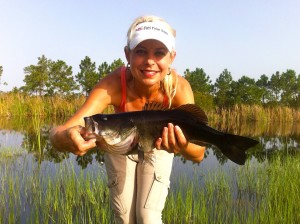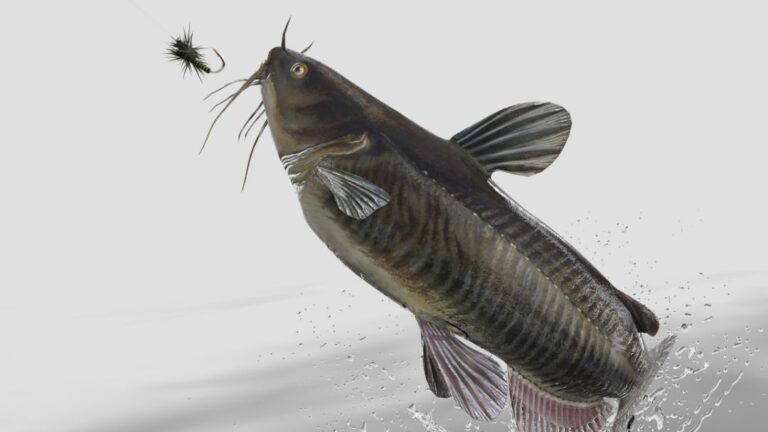How to Tie an Easy Snell Knot for Fishing
Tying a snell knot is essential for anglers. This knot is strong and reliable.
Fishing can be relaxing and rewarding. One key skill every angler should know is how to tie a snell knot. This knot is especially useful because it secures the hook to the fishing line in a way that ensures maximum strength.
Even beginners can learn to tie it quickly with a bit of practice. Understanding how to tie a snell knot not only makes your fishing experience better but also increases your chances of catching fish. In this guide, you’ll learn the steps to tie an easy snell knot. Let’s dive in and make your next fishing trip a success.
Introduction To Snell Knot
Learn how to tie an easy Snell Knot for fishing. This knot is strong and reliable, perfect for securing hooks. Follow these simple steps to improve your fishing success.
The Snell Knot is a popular fishing knot. Anglers use it to secure a fishing hook. It connects the fishing line to the hook in a reliable way. Many fishermen prefer this knot for its strength and ease of use.What Is A Snell Knot?
A Snell Knot is a type of knot used in fishing. It ties the leader or tippet directly to a hook. This creates a strong and secure connection. It ensures the hook remains in line with the fishing line. This alignment helps in improving the chance of a good catch.Why Use A Snell Knot?
The Snell Knot offers several advantages. First, it provides a strong hold on the hook. This reduces the chance of the hook slipping or coming loose. Second, it keeps the hook in a straight line with the fishing line. This alignment improves the hook’s effectiveness. Third, it is easy to tie. Even beginners can learn to tie it quickly. These benefits make the Snell Knot a favorite among anglers. “`
Credit: www.catfishedge.com
Materials Needed
Tying an easy snell knot for fishing requires a few essential materials. Having the right gear ensures a successful fishing experience. Below are the key items you need.
Fishing Line
The fishing line is crucial for tying a snell knot. Choose a line that matches your fishing needs. Here are some types:
- Monofilament: Flexible and easy to handle.
- Braided: Strong and durable, ideal for large fish.
- Fluorocarbon: Nearly invisible underwater, perfect for clear waters.
Make sure the line is in good condition. Avoid using old or damaged line.
Hook Selection
Selecting the right hook is vital. The hook size and type depend on the fish you target. Here are some common hook types:
- J-Hooks: Versatile and widely used for various fish species.
- Circle Hooks: Ideal for catch and release fishing.
- Treble Hooks: Three-pronged, often used with lures.
Ensure the hook is sharp and free of rust. A sharp hook increases your chances of a good catch.
| Material | Description |
|---|---|
| Fishing Line | Monofilament, Braided, Fluorocarbon |
| Hook | J-Hooks, Circle Hooks, Treble Hooks |
With these materials ready, you are set to tie an easy snell knot and enjoy a successful fishing trip.
Preparing The Line And Hook
Preparing the line and hook is crucial for tying an easy snell knot. This step ensures a strong and reliable connection between your fishing line and hook. Follow these simple steps for a successful setup.
Cutting The Line
Start by selecting the right fishing line. Use a sharp pair of scissors to cut the line. Make sure the cut is clean to avoid fraying. A clean cut ensures the line passes smoothly through the hook eye.
Threading The Hook
Hold the hook firmly in one hand. Take the end of your fishing line and pass it through the eye of the hook. Pull enough line through to have a comfortable working length. This extra length will make the knot-tying process easier.
Next, hold the line and hook together. Make sure the hook is facing the right direction. This alignment is key for the knot’s strength. Carefully proceed to the next steps of tying your snell knot.
Forming The Initial Loop
When learning to tie a snell knot for fishing, forming the initial loop is a crucial step. This step ensures that the knot is secure and effective. The process involves two main actions: creating the loop and positioning the hook.
Creating The Loop
Start by cutting a piece of fishing line. The length should be about 12 inches. Fold the line to create a simple loop at the end. Make sure the loop is about 3 inches long. This will be the foundation of your snell knot.
Hold the loop between your thumb and index finger. This will help you keep control of the line. The loop should be loose but not too wide. This allows for easy manipulation in the next steps.
Positioning The Hook
Next, take your fishing hook and hold it so the eye is facing you. Insert the loop through the eye of the hook. Pull the loop until it is snug against the eye. This ensures the loop stays in place during the knot tying process.
Now, hold the hook and the loop together with one hand. Use your other hand to grab the tag end of the line. Wrap the tag end around both the hook and the main line. Make about 7-8 wraps to ensure a strong hold.
Once you have made the wraps, pull the tag end tight. This will start to form the knot. Make sure the wraps are even and tight. This helps to prevent the knot from slipping.
| Step | Action |
|---|---|
| 1 | Cut a 12-inch line |
| 2 | Create a 3-inch loop |
| 3 | Insert loop through hook eye |
| 4 | Make 7-8 wraps around hook and line |
| 5 | Pull the tag end tight |
By following these steps, you can form the initial loop for your snell knot. This is the first step in ensuring a strong and reliable knot for your fishing adventures.
Wrapping The Line
Wrapping the line is a crucial step in tying an easy snell knot for fishing. This step ensures the knot is secure and won’t come undone. Follow these simple steps to wrap your line effectively.
Number Of Wraps
Start by holding the hook and the line together. Use your thumb and forefinger to keep them in place. Begin wrapping the line around the hook shank and the tag end. Make sure the wraps are neat and tight. Do about 5-7 wraps for a strong knot. Fewer wraps may result in a weaker knot.
Securing The Wraps
After completing the wraps, hold them firmly. Use your other hand to pull the tag end through the hook eye. This action secures the wraps in place. Pull the main line to tighten the knot. Ensure the wraps stay tight and do not overlap. Check the knot for any loose wraps. Adjust if necessary.
Tightening The Knot
Once you have wrapped your line around the hook and formed the basic snell knot, it’s time to tighten it. Tightening the knot is crucial. This ensures that the knot is secure and strong. A loose knot can slip, causing you to lose your catch. Follow these simple steps to ensure your snell knot is tight and reliable.
Pulling The Line
Begin by holding the hook in one hand and the tag end of the line in the other. Gently pull the tag end. This will start to tighten the coils around the hook. Keep the coils even and neat. Uneven coils can weaken the knot.
After the initial pull, switch to the main line. Slowly pull the main line to snug the coils closer together. This step is essential. It helps to form a tight and compact knot. If the coils bunch up or overlap, gently adjust them as you pull.
Adjusting The Knot
Once the coils are tight, check the position of the knot. The coils should be close to the eye of the hook. If they have shifted, you can adjust them by pushing or pulling the coils slightly. Ensure that the tag end is still secure and has not slipped out.
Now, wet the knot with water or saliva. This reduces friction and makes it easier to tighten fully. Finally, give a firm pull on both the main line and the tag end simultaneously. This final pull will cinch the knot tight. Trim any excess line from the tag end, leaving a small bit for security.
Now your snell knot is tight and ready for fishing! Always check your knot before casting to ensure it is secure.
Testing The Knot
Once you have tied your snell knot, it is crucial to test its strength. This ensures the knot will hold up during your fishing trip. Testing the knot can prevent losing a big catch due to knot failure.
Checking The Strength
To check the strength of your knot, start by pulling the line with a firm, steady motion. Hold the hook in one hand and the line in the other. Apply pressure gradually. This helps you see if the knot slips or holds tight.
Next, try a quick, sharp tug. This simulates the sudden jerks that a fish can cause. If the knot holds, you have tied it correctly. If it slips, you need to retie it.
Making Adjustments
If your knot does not pass the strength test, do not worry. Small adjustments can make a big difference. First, check the wraps around the hook. Ensure they are tight and even. Loose wraps can weaken the knot.
Also, inspect the tag end of the line. It should be trimmed close to the knot but not too close. Leaving a small tag end can prevent the knot from slipping.
Finally, if the knot still seems weak, wet it before tightening. Moistening the knot reduces friction and helps it set better. This simple step can improve the knot’s strength significantly.
| Step | Description | Purpose |
|---|---|---|
| Firm Pull | Pull the line steadily to test the knot. | Ensure the knot does not slip. |
| Quick Tug | Apply a sharp tug to the line. | Simulate a fish’s jerks. |
| Check Wraps | Inspect and tighten the wraps around the hook. | Ensure even and tight wraps. |
| Trim Tag End | Trim the tag end close to the knot. | Prevent the knot from slipping. |
| Wet the Knot | Moisten the knot before tightening. | Reduce friction and improve strength. |

Credit: www.youtube.com
Tips And Tricks
Learning to tie an easy snell knot for fishing can be a game-changer for your angling experience. This section provides tips and tricks to help you master this essential skill. Follow these guidelines to avoid common mistakes and ensure your knots are strong and reliable.
Common Mistakes
Several common mistakes can make your snell knot less effective. Be aware of these to improve your technique:
- Incorrect Loop Size: Make sure the loop size is consistent. Too large or too small can weaken the knot.
- Twisting the Line: Avoid twisting the line while wrapping it around the hook shank. This can cause tangles.
- Not Wetting the Line: Always wet the line before tightening the knot. This reduces friction and prevents line damage.
- Improper Tightening: Tighten the knot slowly and evenly. Rushing can lead to a weak or uneven knot.
Best Practices
Follow these best practices to tie a perfect snell knot every time:
- Use Quality Line: Always use a high-quality fishing line. This ensures durability and strength.
- Practice Regularly: Practice tying the knot often. This helps you get faster and more efficient.
- Check Knots: Always check your knots before casting. A quick check can save a fish.
- Keep Tools Handy: Have scissors or a line cutter nearby. This helps trim excess line neatly.
These tips and tricks will help you tie an easy snell knot. Remember to avoid common mistakes and follow best practices for a successful fishing trip.
Credit: www.netknots.com
Frequently Asked Questions
What Is A Snell Knot?
A Snell Knot is a strong fishing knot. It is used to attach a hook to the fishing line. This knot ensures the hook aligns with the line for better performance.
Why Use A Snell Knot For Fishing?
A Snell Knot provides increased hook strength. It aligns the hook with the line. This improves bait presentation and hook setting.
How To Tie A Snell Knot Easily?
To tie a Snell Knot, loop the line through the hook eye. Wrap it around the shank. Pull the tag end to tighten.
Can Beginners Tie A Snell Knot?
Yes, beginners can easily tie a Snell Knot. It requires simple steps. Practice makes it easier.
Conclusion
Learning to tie an easy Snell knot can transform your fishing experience. It strengthens your hook connection. This means fewer lost catches. Practice makes perfect, so keep trying. With time, tying this knot will become second nature. Enjoy the process.
Happy fishing!




